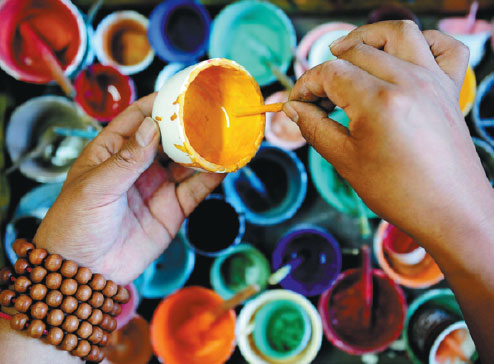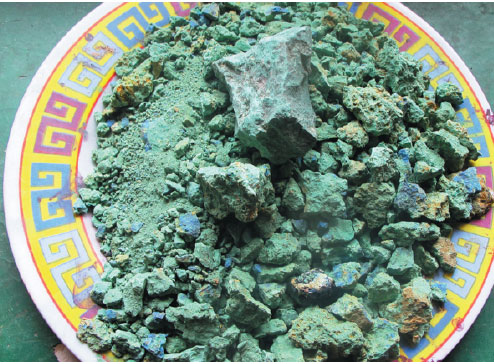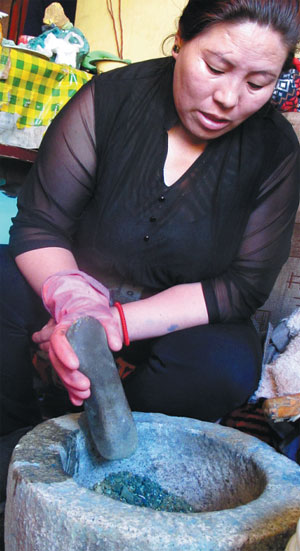Pigment producers push to protect ancient art
Updated: 2015-07-17 14:38
By Palden Nyima(China Daily USA)
|
||||||||
|
A thangka artist creates a variety of hues using mineral pigments. Li Shaopeng / Xinhua |
|
Ores are broken into pieces before being ground to a fine powder in a water-filled stone groove. |
|
Tsamcho grids particles of pigment in a crucible. |
Ageless beauty
"Tibetan mineral pigments will remain bright and unfaded for more than 200 years, sometimes as long as 1,000 years," Samdrub said.
"The pigments produced at lower altitudes cannot endure the harsh conditions in Tibet, such as the intense ultraviolet light and strong winds," the 50-year-old added.
He said the company has eradicated the sale of counterfeit or low-quality products. "Instead of cheating people, it's important to show them different products at different prices. If people cannot afford to buy artifacts made with mineral pigments, there are always alternatives, such as thangkas produced using pigments produced in other places in China and in India," Samdrub said.
Only four companies in China produce genuine Tibetan mineral pigments - unsurprisingly three of them are situated in Tibet, while the other is in Beijing.
Traditionally, thangka painters made their own pigments, but they were for personal use and not for sale. The arrival of the market economy resulted in changes, though, and Lhasa Ancient Architectural Arts trademarked its pigments 15 years ago.
The company employs eight thangka masters, more than 30 apprentices and five pigment producers, who make 18 different pigments, all the colors a painter needs.
Moldmakers, coppersmiths, welders, carpenters and stonemasons are also employed, so whenever renovation work is scheduled for ancient buildings and monasteries, the company can provide a full range of services. That edge means business is usually good.
The company's pigments are sold across the Qinghai-Tibet Plateau, in other parts of China, and even overseas in places such as the United Kingdom and France.
"An old Tibetan proverb says: 'Some work requires a light, sick person's touch, while other jobs require great strength, like that of a strong, young man', " Penpa said.
"The process of producing pigments requires a great deal of patience, time and different strengths during different procedures, so the work is carried out exclusively by women," he added.
Contact the writer at palden_nyima@chinadaily.com.cn

 Across America over the week (July 10- July 16)
Across America over the week (July 10- July 16)
 Unusual but true: inspirational art lights the way
Unusual but true: inspirational art lights the way
 Jury decides Colorado theater shooter guilty
Jury decides Colorado theater shooter guilty
 Top 10 global cities in greenfield FDI
Top 10 global cities in greenfield FDI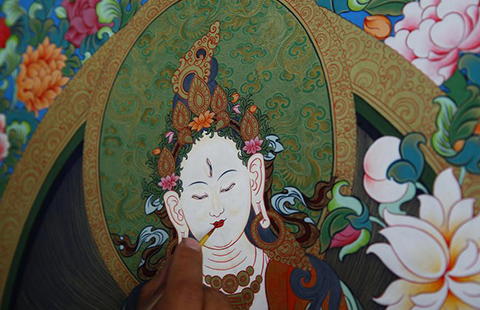
 Thangka art booms in Regong
Thangka art booms in Regong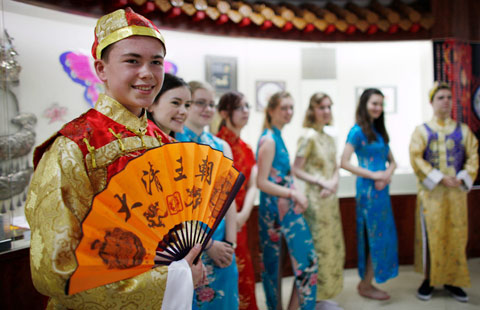
 UK students experience Chinese culture in Tianjin
UK students experience Chinese culture in Tianjin
 World's first figure 8 Ferris Wheel to be opened in Macao
World's first figure 8 Ferris Wheel to be opened in Macao
 Heavy downpour hits SW China
Heavy downpour hits SW China
Most Viewed
Editor's Picks

|

|

|

|

|

|
Today's Top News
China faults Japan's new security bills
Chinese national pleads guilty in Pennsylvania to test-taking scam
Industries should be on digital Silk Road to expand market
Lengthy rehab expected for elder George Bush
UN Security Council to vote Monday on endorsing Iran deal
China's GDP grows by 7%
Japan passes disputed bill
Petcoke called key in pollution fight
US Weekly

|

|
